The first thing I saw in Ilfracombe was Verity, a 66 foot high bronze warrior woman holding an enormous sword above her head and a set of scales behind her back. Truth and justice, you see. But Verity is entirely naked, heavily pregnant and flayed down her whole right half, exposing muscle and flesh and foetus. I’d like to say something about her embodies something of Ilfracombe but… she’s just a big state staring out to sea. She reminds me of Rodina Mat in Kyiv, the Motherland Monument but I can’t find any parallels to draw between the former USSR and North Devon either.
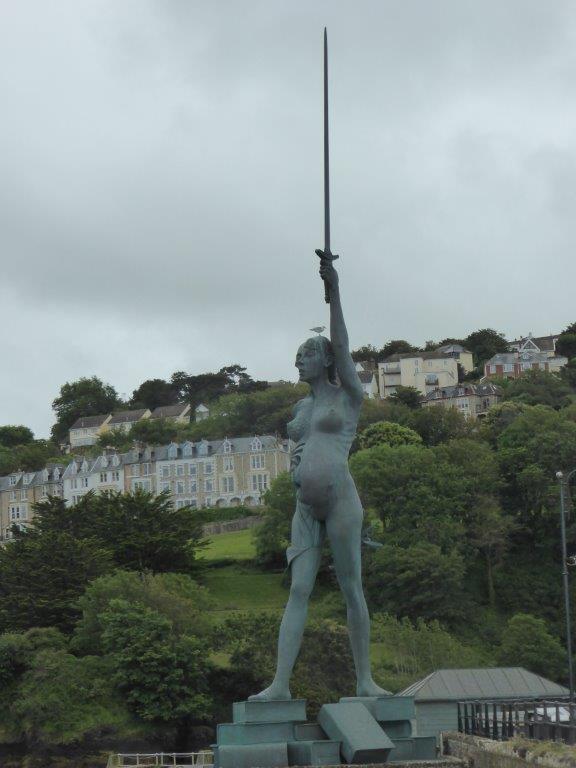
Verity aside, Ilfracombe is a seedy little fishing town, one of many around Britain’s coast that became resorts in the Victorian days. It’s lined with terraces of tall Victorian townhouses looking out to see and a lot of them are starting to look old and tired. It’s characterful – the character of a fading seaside town long past its heyday.
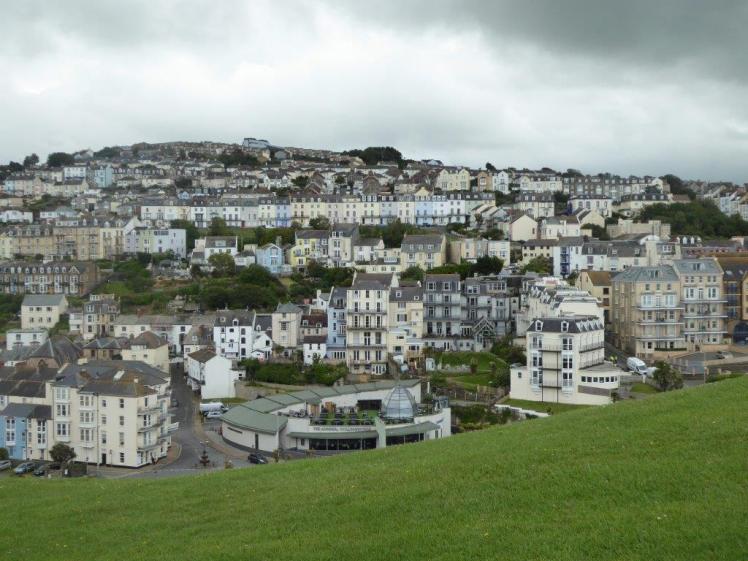
However, if you take a step away from Ilfracombe’s shabby town and look at its coast, well, this is magnificent. I really like Ilfracombe! How different the Famous Five books would be if Enid Blyton had discovered the fragmented North Devon coast instead of Dorset’s sheer cliffs. It’s taken until now, sitting on the beach with a notebook, to realise why and how this is all so different from the south coast I’m more familiar with. No limestone. This is slate and its thin sharp layers are what give Ilfracombe’s coastline that jagged shattered appearance. That and the tide. This is on the edge of the Severn where the difference between high and low tide can be five or ten metres as the entire Atlantic Ocean tries to force its way up to Bristol. Add in a strong cross-Atlantic breeze or a good storm and you’ve got quite some potential for violence in this bit of sea, far worse than my own relatively tame bit of coast which is gentled by the English Channel.

There are three principal chunks of slate along Ilfracombe’s seafront. From the east, the first is Hillsborough, apparently known locally as the Sleeping Elephant, although I’ve seen rocks more elephant-shaped in my life. It’s a nature reserve and around the bottom are numerous wild little bays and coves and the South West Coast Path swoops over the top.

The second is Lantern Hill, much much smaller and topped with St Nicholas’ Chapel although it hasn’t actually been a chapel since Henry VIII abolished the monasteries in the 1530s.

The third is Capstone Hill, which blocks the sea view from at least a couple of Victorian terraces. This one is a proper chunk of rock, topped with a flagpole, a trig point and a statue of a girl who probably isn’t dabbing but kind of looks like it. It’s actually a memorial to Ekaterine Frolov, a Russian girl who fell from Hillsborough aged 13 in 2000. On first glance, she looks like a counterpoint to Verity, the young carefree girl vs the heavily meaningful warrior woman but no, the two aren’t meant to contrast or complement.

There’s some evidence that Ilfracombe is trying to update its Victorian seaside aesthetic. There’s the Landmark Theatre at the foot of Capstone Hill, a modern monstrosity of power station cooling tower-style pots sticking out of a turf roof which blends into the hill that rises up again on the west side of that little bit of cove. Then there’s the Wetherspoons, not following the traditional model of upcycling characterful old buildings – this one looks purpose-built, odd, modern with a grass-covered roof terrace that kind of mimics the Landmark’s grassy roof. Elsewhere, century-and-a-half old terraces are being replaced with modern versions, twenty-first century, warehouse-style, still tall but more stylish by modern standards.
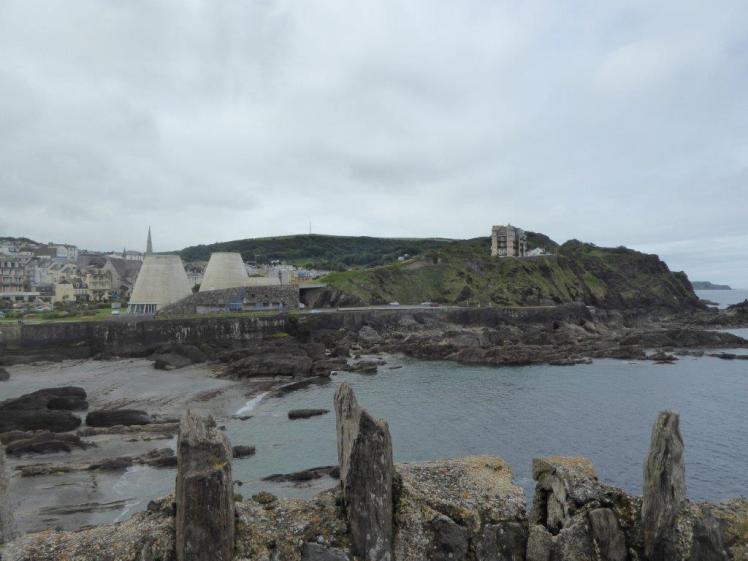
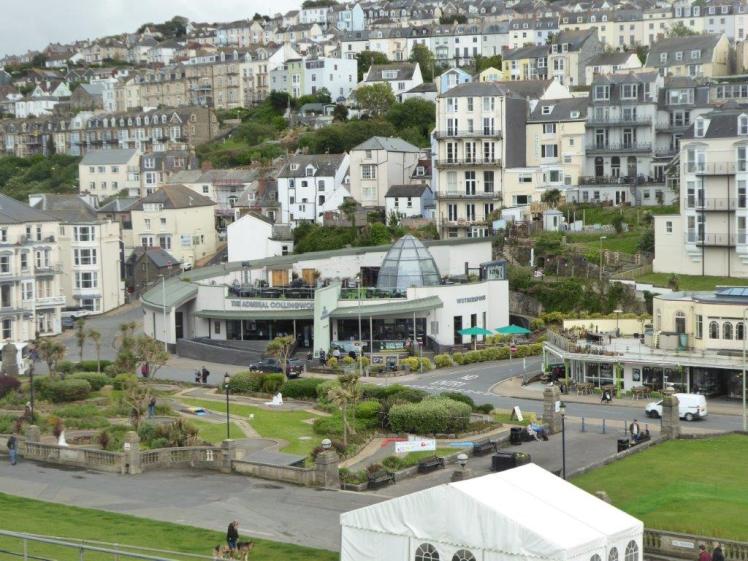
I’m not a seafaring person. I hold the RYA Level 1 and 2 dinghy certificates and what I learnt from that is that I don’t like sailing, I don’t like the sea and it’s a terrifying thing. That means I don’t know much about tides, although I know enough not to get killed by one. And I said earlier that it’s pretty dramatic here and it turns out that extends to the speed of it.

I sat on the beach between Capstone Hill and the theatre writing this in my notebook and when I got up, I discovered that the route across the front of the beach, between the large rocks, was already somewhat awash. Oh, there’s still plenty more beach to scramble over and I never in any danger, not even of getting my feet damp. And then I climbed Capstone Hill and looked down and discovered that the entire bit of beach had vanished in maybe half an hour, probably less.
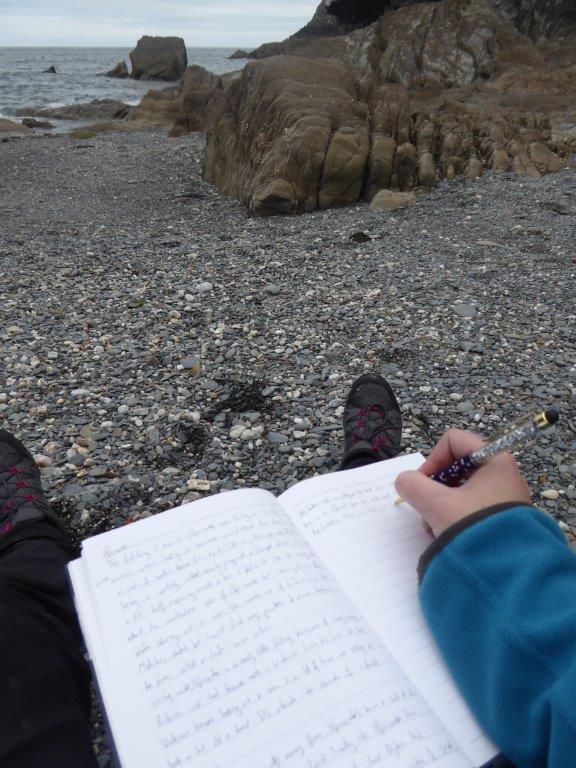
Given the two days between the notebook version and the blog version, have I managed to find anything more profound to say about the connection between Verity and Ilfracombe? No, I haven’t. Sorry.